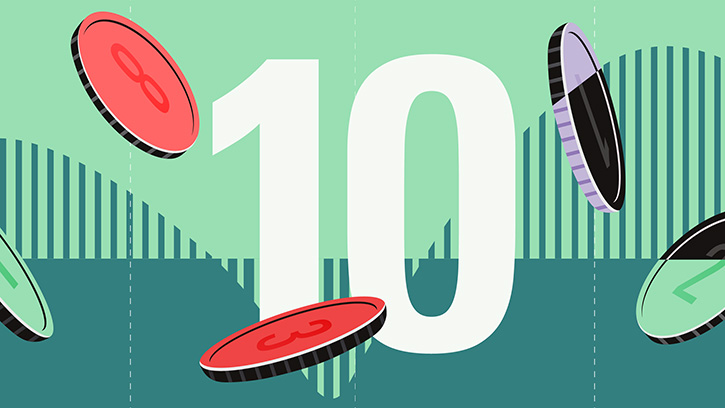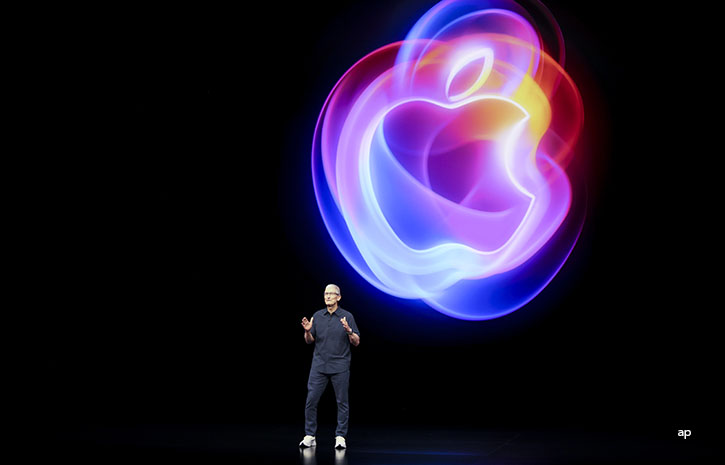
Interest rates are tipped to stay lower for longer. Good news for the nation's homeowners, perhaps, but retirees and savers are scrambling to find alternative sources of return.
Dividend payers such as the big banks and other favourites such as Enbridge (ENB) and Bell Canada (BCE) are prized by Canadian investors searching for income in retirement.
In part one of this discussion, we noted dividends are an indication that a business is established and financially healthy enough to return cash to shareholders. They also force management to focus on the long term and their capital-allocation decisions.
Sadly, however, so-called high yield stocks are not necessarily the best buys. Choosing stocks with the highest dividend yield can lure investors into risky corners of the market, exposing them to financial distress, dividend cuts, and share price declines.
"There's a paradox at the heart of high-yielding dividend strategies,” says Josh Peters, former editor of the Morningstar Dividend Investor newsletter. “Large dividends are more rewarding than small ones, but large dividends place a bigger financial burden on the companies that pay them – and that burden can be tough to shoulder at times."
"This underscores need for quality, which is to dividend investing what location is to real estate agents."
In this article, we've asked Morningstar portfolio managers and equity analysts how they identify companies that will continue to deliver a reliable and growing income stream to shareholders.
We'll look at six factors that can contribute to a sustainable dividend:
- Is the company financially healthy enough to sustain and even grow their dividend?
- Does the company have a history of growing its dividend?
- Does the company have a sustainable competitive advantage?
- Are the dividends on offer at a reasonable price?
- Does the payout ratio provide an adequate margin of safety given the variability and cyclical sensitively of the company's profits?
- Is the company financially healthy enough to sustain and even grow their dividend? Does it manage its debt load?
Seek 'healthy' payout ratios
One of the most important statistics for dividends is a company's payout ratio.
As the name suggests, the payout ratio is the proportion of a company's earnings paid out as dividends. For example, if a company pays out $2 a share and has $5 of earnings, 2 divided by 5 is 0.4 – or 40 per cent. The payout ratio is 40 per cent.
A lower payout ratio can indicate that the dividend is "healthy". Morningstar’s director of investor education Karen Wallace explains:
"There is a margin of safety that would allow a company to miss its earnings target and still be able to pay out its dividend, and there may also be room for management to increase the dividend over time."
A payout ratio over 100 may indicate that the dividend is in jeopardy, Wallace says, because no company can continue to pay out more than it earns indefinitely.
Peters says the payout ratio is a key number in evaluating dividend safety. But it's not the only stat to consider:
"It's the context for the way you think about other aspects of dividend safety; but what's a good payout ratio for a utility – say 70 per cent – would be much too high for a steel mill or an oil refiner, which are much more volatile businesses where earnings could be wiped out at the bottom of a cycle and the dividends get cut," he says.
Peters advises investors to think about how a payout ratio balances against the company's need to invest for internal growth, as well as providing that cyclical safety margin for future downturns.
Make sure your dividends grow
Ultra-high dividend yields can be particularly attractive in the current low-return environment, but it’s important to resist the temptation to load up on these shares. In Peters’ view, investors are better placed seeking companies who not only pay out dividends but also have a track record of continued dividend growth.
"If the company just raised its dividend, it's quite unlikely – unless it has a deliberately and obviously variable policy for paying dividends on a quarterly basis – it's very unlikely it's going to turn around and cut it immediately," he says.
Wallace agrees, saying companies that are focused on growing dividends "tend to be higher-quality, cash-rich businesses that hold up well in down markets, participate in up markets, and are capable of excess returns over a full market cycle".
But like the payout ratio, growing dividends is not a perfect indicator, Peters says.
"Dividend cuts in the past don't mean that dividend cuts are going to be there in the future, and the absence of a cut doesn't guarantee that the dividend won't be cut in the future.
"But if you have a pattern of dividend cuts, it certainly raises important questions about the business. Maybe it's too volatile to sustain what you expect."
But does it have a moat?
When selecting stocks for Morningstar's income equity model portfolio, Peters says he always insists on a narrow or wide economic moat around the business. In other words, does the company have a sustainable competitive advantage? Can this company protect its business from competition over the next five, 10, 15 years?
Why do moats matter when it comes to dividend stocks? Peters says he seeks out companies with economic moats because he wants to be confident of their ability to generate free cash flow and raise their dividend payouts over time and through periods of volatility.
"These sustainable structural competitive advantages that we identify for individual businesses that we expect to last 10, 20, or more years, those are defending the profitability of the company. And it's those profits and cash flows that are, in turn, needed to pay dividends," he says.
For example, he prefers to own a stock like Coca-Cola (KO), a wide-moat company, where they can influence demand for their product, over a no-moat company like Dow Chemical (DOW) where investors are riding the cyclical waves.
"[Coca-Cola] have very good profit margins, and they have the opportunity to expand them further. They generate a tremendous amount of free cash flow, even in the tough times for their industry, even when the company, like right now, is in a little bit of a funk. It's not really performing up to its full potential," he says.
"[For Dow Chemical] they really control the demand for their product, how much they can sell it for, or how much it costs to produce, that's not compatible with a safe and growing dividend."
Don't ignore the balance sheet
Considering equity metrics such as price-to-earnings and earnings-per-share are worthwhile, but paying too much attention to them and too little to balance sheet metrics is a common mistake, says former Morningstar equity analyst Todd Wenning. Balance sheet metrics are things like gearing (or borrowed money), interest coverage and net debt/EBITDA.
Morningstar senior portfolio manager Nimalan Govender agrees. Dividend investors are best placed seeking out companies where management understands the present and future investing needs. "This lends itself to low-debt companies, who have the ability pay out sustainable dividends each year,” he says.
For Wenning, a good rule of thumb is to be extra sceptical of companies with interest coverage ratios (EBIT/interest expense) below three times or net debt/EBITDA ratios above two times.
Peters also says healthy balance sheet – or a balance sheet with more total assets than liabilities – is a positive.
"Remember that all creditors stand ahead of you in line for companies' cash flows, so you don't want too much debt on the balance sheet," he says.
"It's very important for the company to have some excess borrowing capacity so that it can smooth out potential short-term shortfalls in cash flow, while continuing to invest in the business and maintain its dividend."
A good balance sheet also puts less strain on equity financing.
"A company with a strong balance sheet can go to the market and borrow cheap debt to pay for acquisitions, projects that they're doing internally. They don't need to issue new equity or knock over their dividend quickly to be able to finance these operations," Wenning says.
Pay attention to valuation
Buying a share for their dividends and yield alone may save you from making emotional trading decisions based on share price volatility, but Peters says constantly overpaying for shares is no formula for success. A company with a fat dividend yield is only attractive at the right price.
"When you buy a stock, you might see a good dividend-growth rate and a safe and decent yield, but if the stock can't keep up with the growth rate of the dividend over time, then you are going to earn less than you expected," Peters says.
"So, the best way to get a sense- for me anyway - of the stock's valuation and whether or not it can sustain that valuation so that I get dividend yield plus dividend growth or better as my total return is to look for stocks that are trading at or below our Morningstar fair value estimates, which considers all of our research, all of our forecasting of the company's future financial performance, and condensing it down into that valuation."
When it comes to dividend yields of more than 2 per cent, about 14 per cent of the names under Morningstar coverage earn 4 or 5 stars. Some dividend payers are quite overvalued at today's levels; 36 per cent of companies with robust, 2 per cent plus dividends, currently earn 1 or 2 stars.
Wenning says he always insist on buying shares with a "margin of safety”—that is, companies trading at a meaningful discount (at least 10-15 per cent) to your fair value estimate.
Look at free cash flow and beware ‘pseudo dividends’
For Govender, excess free cash flow is a crucial sign of a company’s ability to maintain sustainable dividends. That way, if a company goes through a tough year, they may still have enough of a buffer to maintain their payout.
But don’t forget to consider how that free cash flow is generated. Is it relying on debt to pay unsustainable dividends?
"I see this as financial engineering rather than true excess free cash flow generation,” Govender says. “A pseudo dividend, but not a long-term, sustainable dividend. Eventually the chickens come home to roost."
Both Peters and Wenning says they like to look for at least 1.5 times free cash flow cover.
"On both an earnings and a free cash flow basis, you need to have about 1.5 times coverage - about two thirds of earnings and free cash flow are being used to pay the dividend," Peters says.
"That leaves you a big safety cushion, a big margin of safety for a potential short-term drop in cash flow."
Are you getting the right return?
Get our free equity indexes to benchmark your portfolio here






















